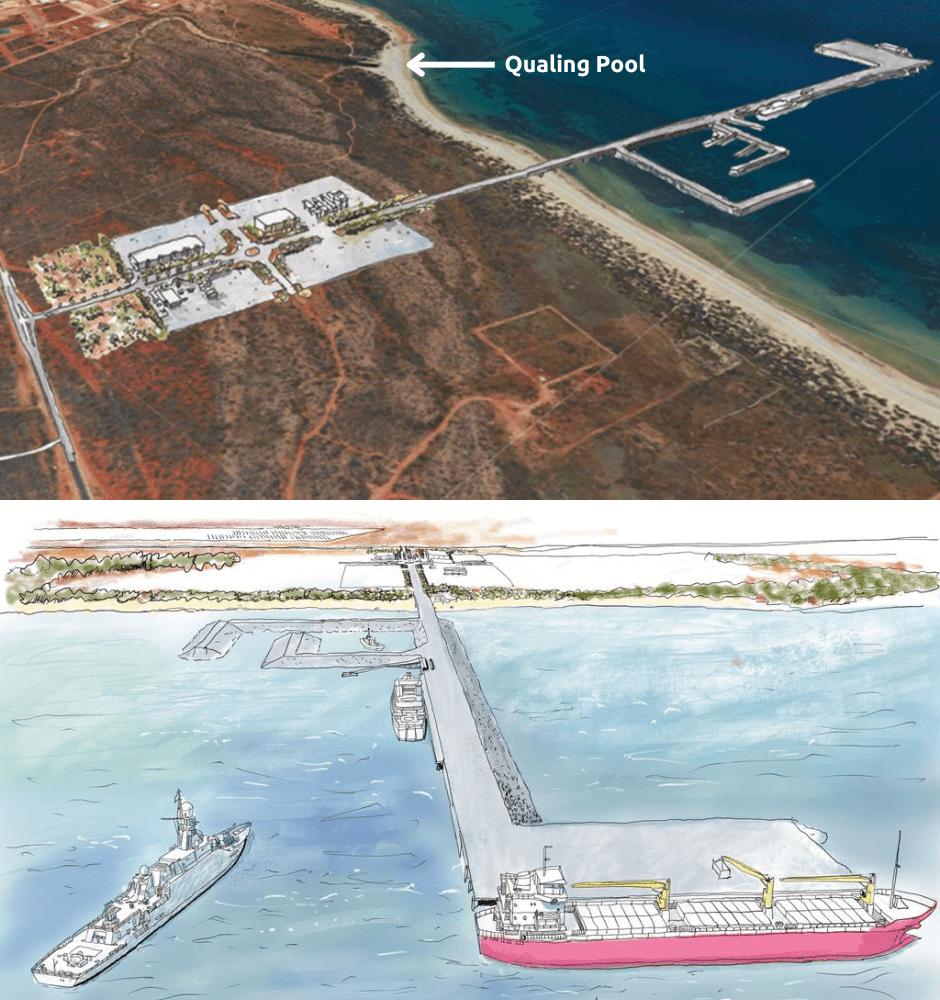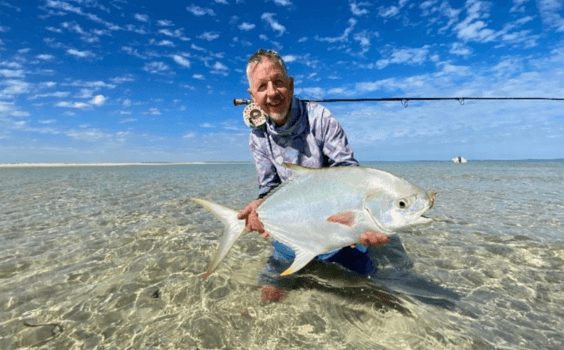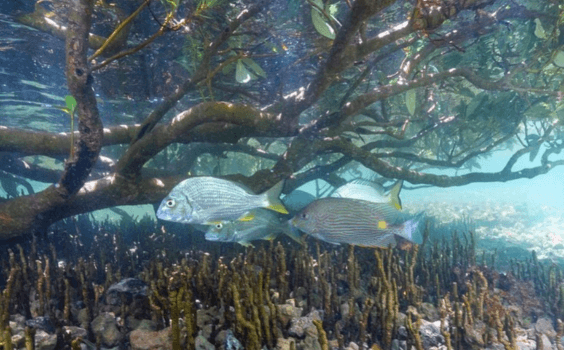With more than 150,000 tourists visiting Exmouth each year, you can guarantee that a majority of them are intent on wetting a line in Exmouth Gulf – and for good reason.
From bluewater speedsters – queenfish and trevally, to creek-dwellers – mangrove jack, cod and coral trout to hard-fighting cobia shadowing gliding manta rays – you could spend a month fishing the Gulf and have a different story to tell each day.
As mentioned in our recent article on Exmouth Gulf’s magnificent wilderness fishing, the Gulf is home to one of WA’s – and Australia’s – best fishing destinations cherished by local fishers and visitors who flock to Exmouth every year alike.
However, some of the pristine environment that supports these amazing fishing experiences could be under threat from two industrial development projects planned for Exmouth Gulf – namely the proposed Gascoyne Gateway Port and the K+S salt project.
Here’s what we know about these two developments so far and how they could potentially impact the Gulf’s ecosystems and beyond.
Gascoyne Gateway Port
Planned for construction around 10km south of Exmouth town, Gascoyne Gateway is a port and jetty planned to extend around 1km in length into the sheltered waters of the Gulf.
It’s a potentially imposing landmark that would require significant dredging of seagrass beds and nearshore limestone reef, which play a crucial role in providing shelter and nursery grounds for many marine species such as squid, turtles, dugongs and hundreds of fish species that thrive in the Gulf.

The proposed development is being promoted on the Gascoyne Gateway website as ‘providing the Exmouth Gulf’s existing marine traffic with a better place to berth’ including tourist and navy vessels. However, it would result in a higher volume of large shipping traffic coming in and out of the Gulf, potentially making navigation for trailer boats challenging as they head to prized fishing spots such as King Reef, the Shoals or the Muirons.
The increased shipping traffic could also potentially displace the 40,000-plus humpback whales, which grace the waters of Exmouth Gulf between June and the end of October each year for mating and calving. It’s one of the world’s largest known annual humpback congregations and the breaching mammals often put on a spectacular display enjoyed by thousands of boat-fishers who venture into the Gulf.
Land-based fishers could also be impacted from wetting a line around the proposed port and no guarantees have been given at this stage that fishers will have access to fish off the jetty structure if the development goes ahead.
While construction was initially planned for 2024, with the port operational by 2025 according to the Gascoyne Gateway website, that estimated timeline would likely be pushed back substantially if Government approves the project.

K+S Salt Project
The world’s largest salt company – German-owned K+S Salt Australia – is planning to construct a salt mine 55km north-east of Exmouth and 40km south-west of the township of Onslow.
The proposed project – dubbed the Ashburton Salt Project – is 52 times the size of Kings Park!
While the proximity of the salt mine to Exmouth and Onslow might not ring alarm bells for locals, the negative flow-on effects of constructing this site on an already fragile ecosystem certainly does.
A project of that size – around 21,000 hectares – requires a significant amount of habitat removal.
The flow-on effects could have dire consequences on the 120,000 hectares of wetlands and mangroves situated on the Gulf’s eastern side.
Not only are these mangroves teeming with species that fishers love to chase such as mud crabs, mangrove jack and countless others, but they are the life source for the vibrant marine life found in the Exmouth Gulf that is also crucial for supporting the 260km-long Ningaloo Reef stretching down the mid-WA coast.
The roots and trunks of these specially adapted trees provide shelter for the spawning and refuge of hundreds of species of fish, rays, prawns and crabs.
The WA Environmental Protection Authority (EPA) will make an environmental assessment and recommendation on whether the K+S Salt Project can go ahead, with the WA Environment Minister making the final call on proceedings. The EPA is currently taking comments from the public on this project.

A history of rejection
As has been the case numerous times in WA’s history for large-scale industrialisation projects in the Exmouth Gulf, environmental impacts and the potential repercussions on recreational fishing have not properly been factored in by developers– which has contributed to many previous projects being quashed.
Recfishwest Operations Lead Matt Gillett said, “Recfishwest is not opposed to projects that benefit regional towns, but they must not hinder the access or sustainability of fishing experiences in the region. These factors should be built into developers’ proposals for any projects like this before they even consider submitting them to Government. What’s at stake here is simply too precious to do otherwise.
“The Exmouth Gulf is one of the best fishing destinations in the world and is a very special place for tens of thousands of fishers each year. It is crucial that both project parties understand that any negative impact on fishing in this area will simply not be acceptable.
“A public environmental review of the K+S Salt Project is now open until September 4 and it is crucial that fishers have their say to express what is important to them. Recfishwest will ensure no stone is left unturned in this process and will continue to meet with traditional owners, community members and decision makers to protect this world-class fishery at all costs.”
